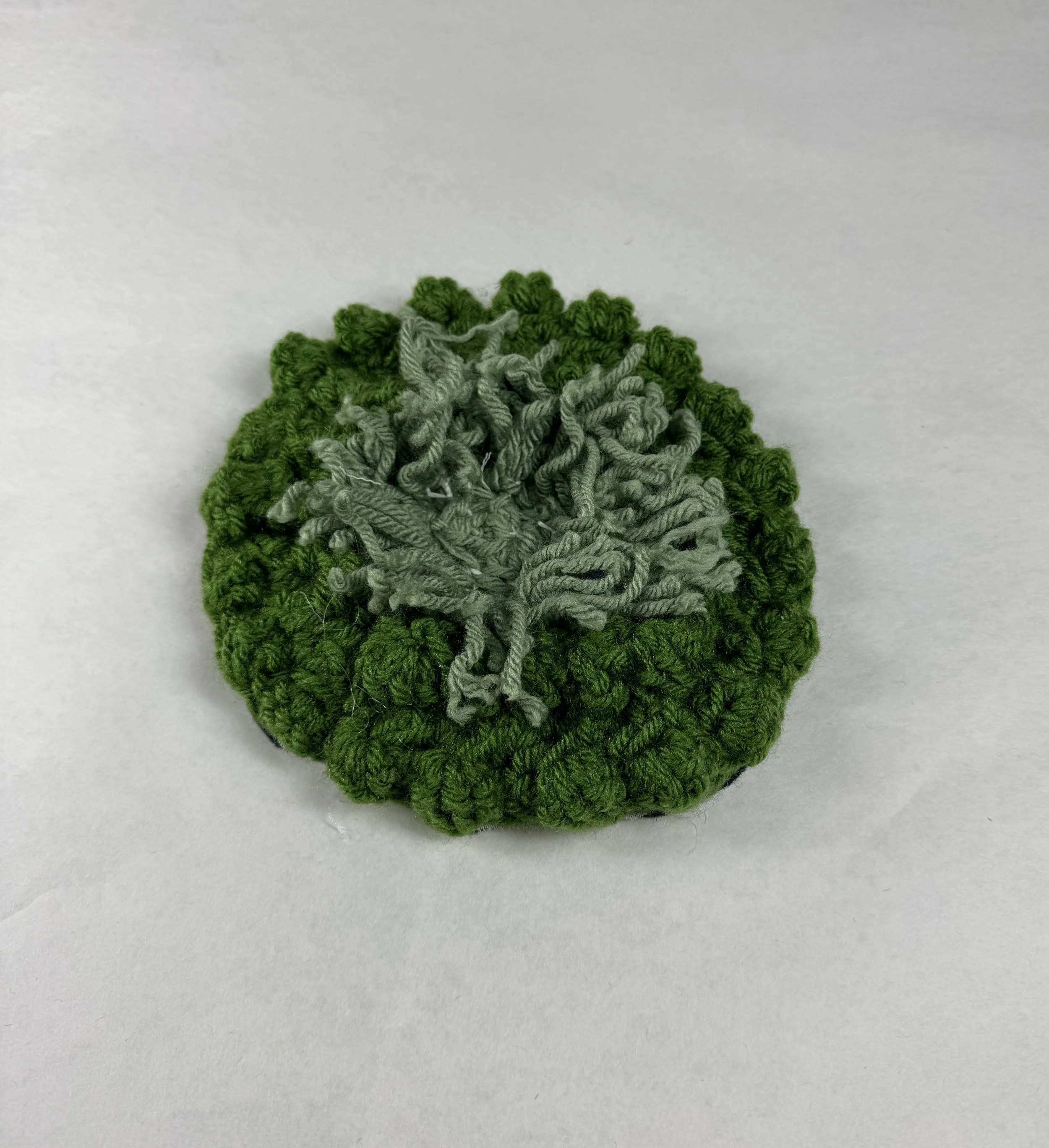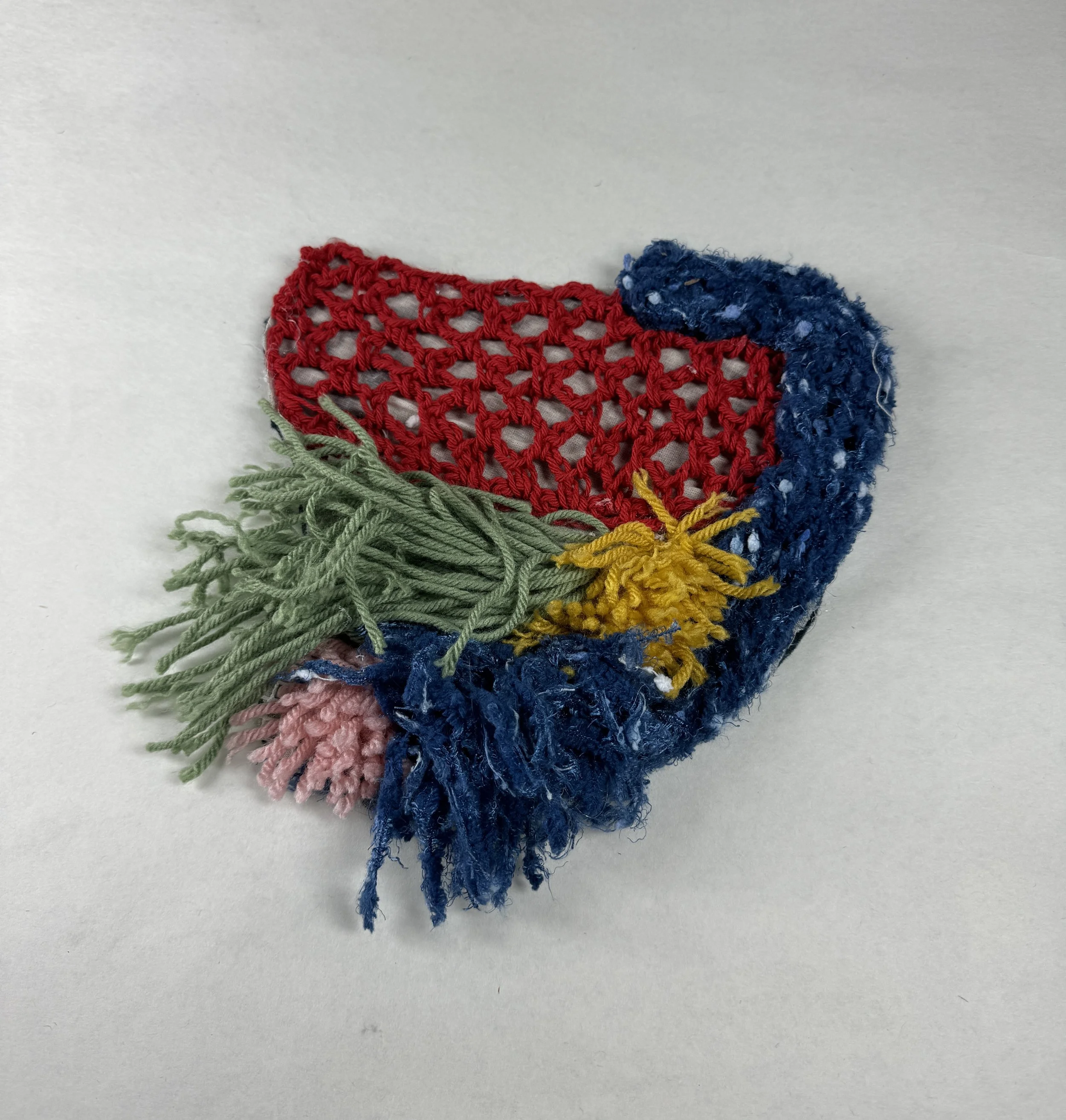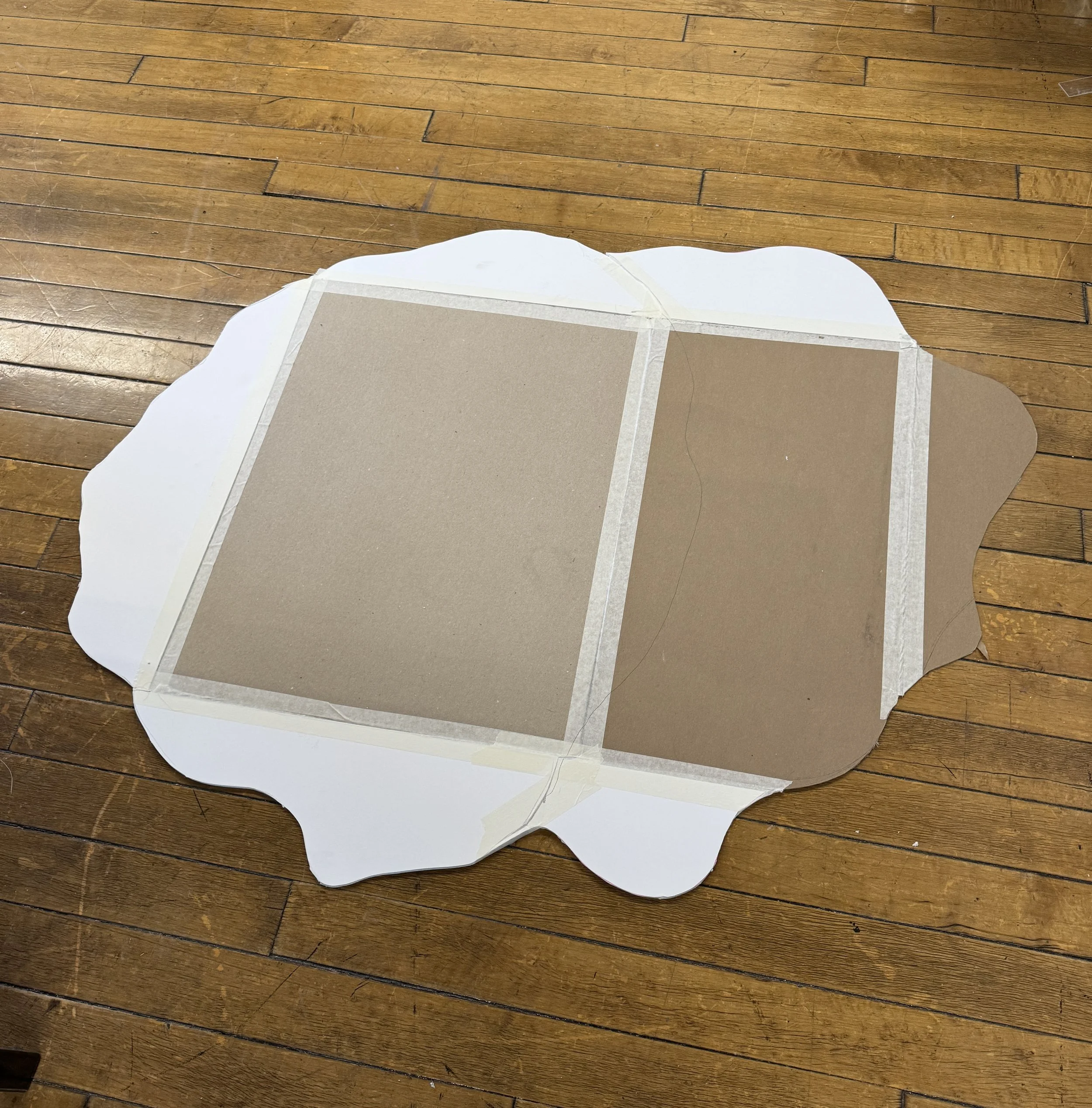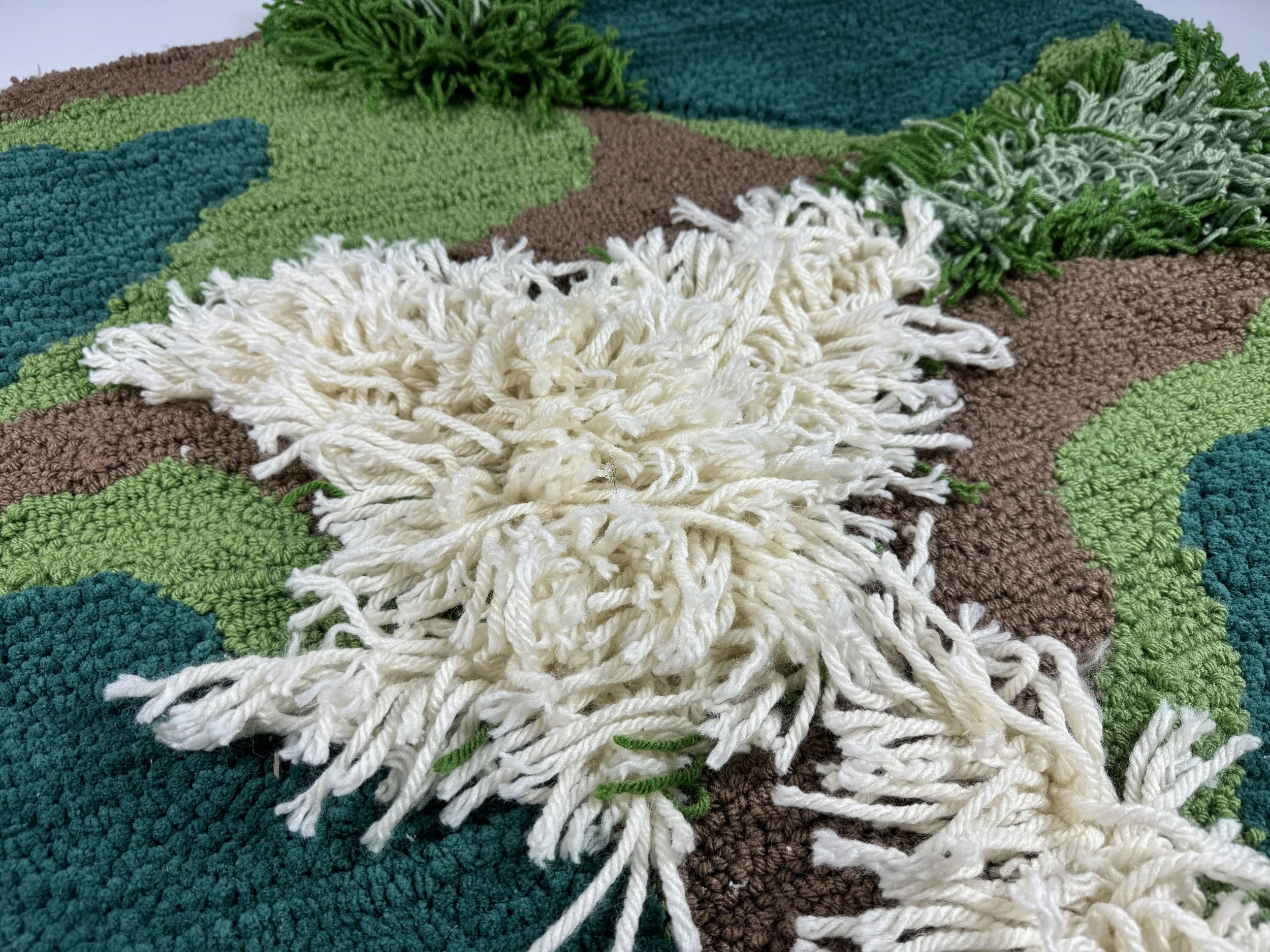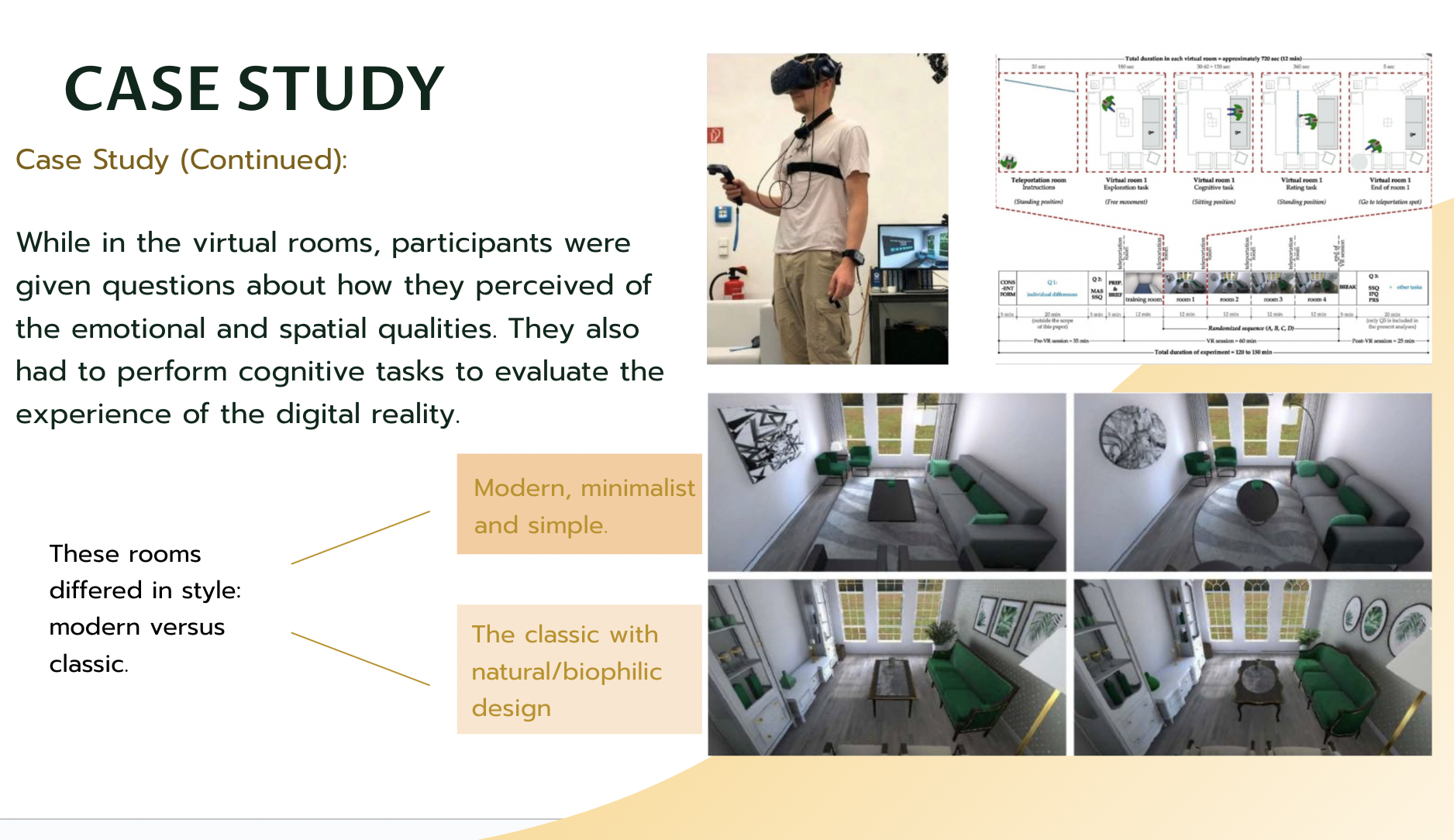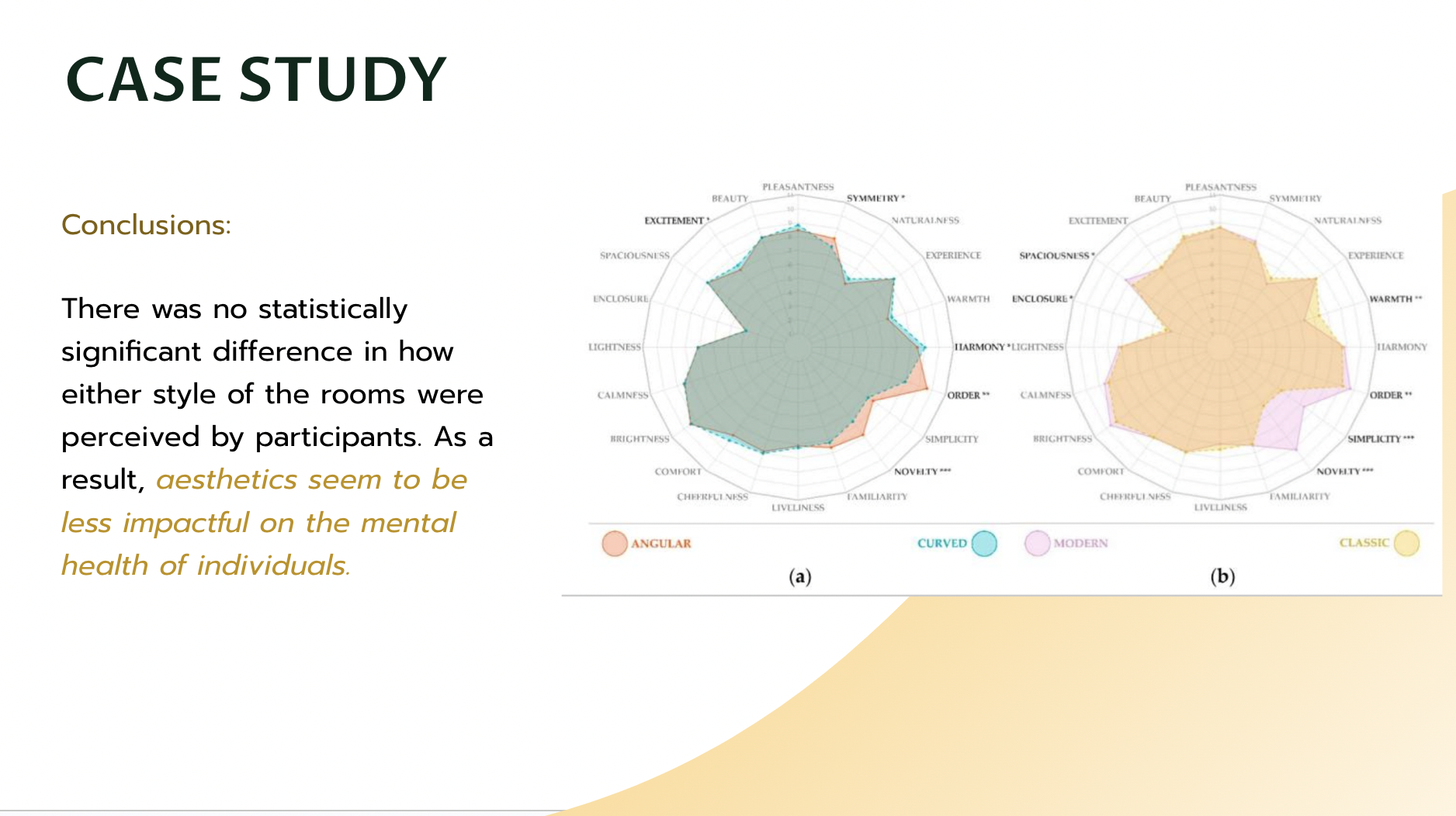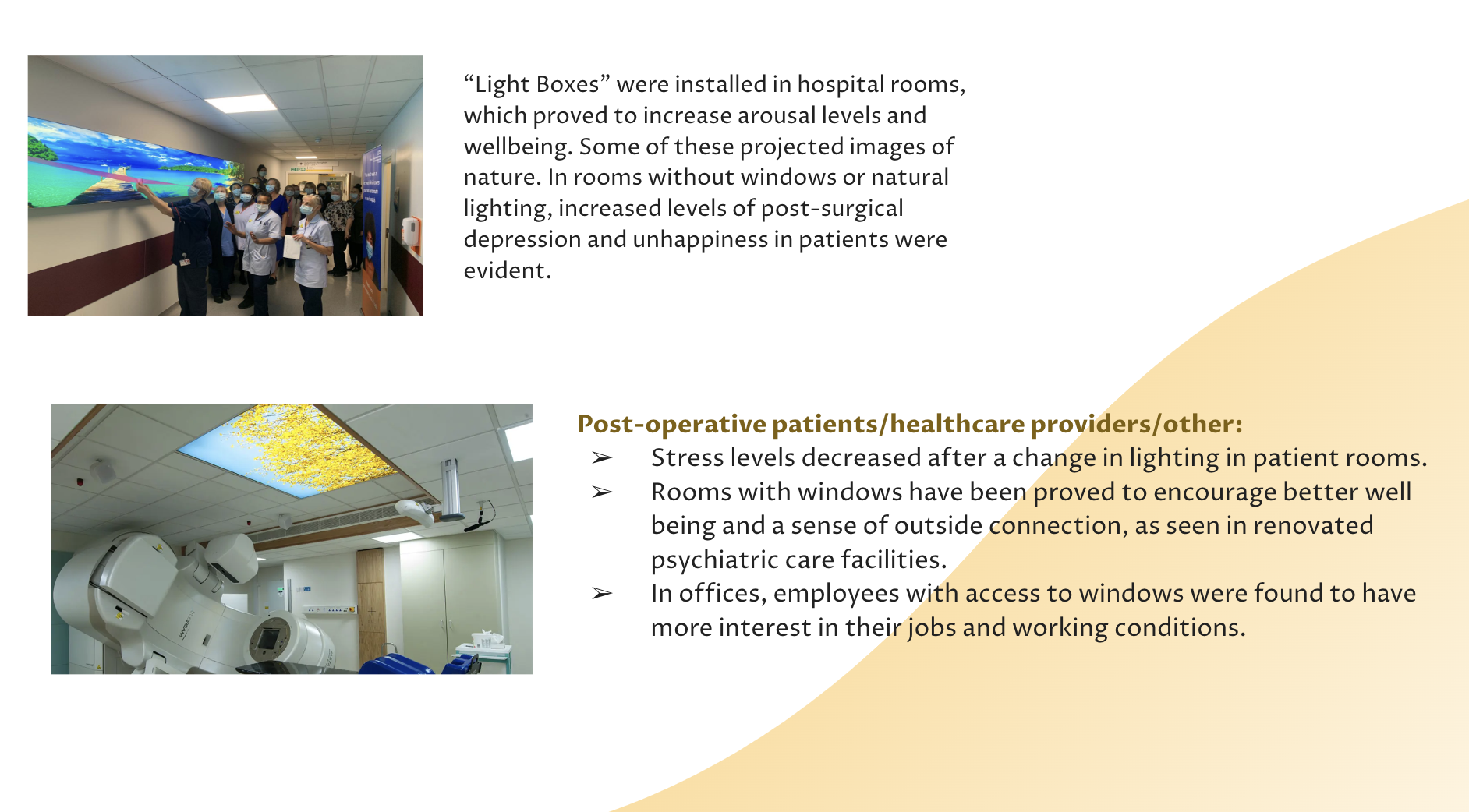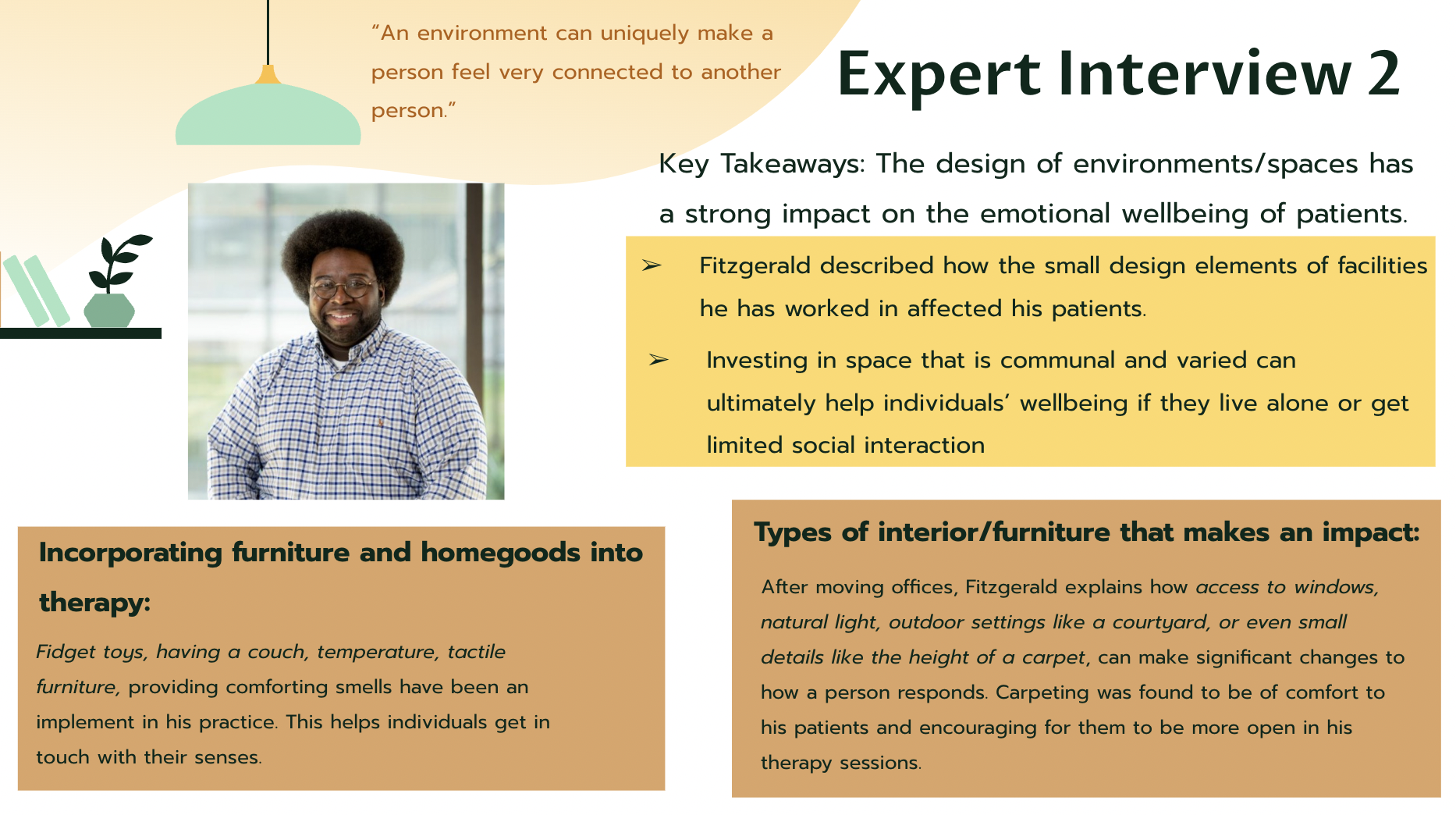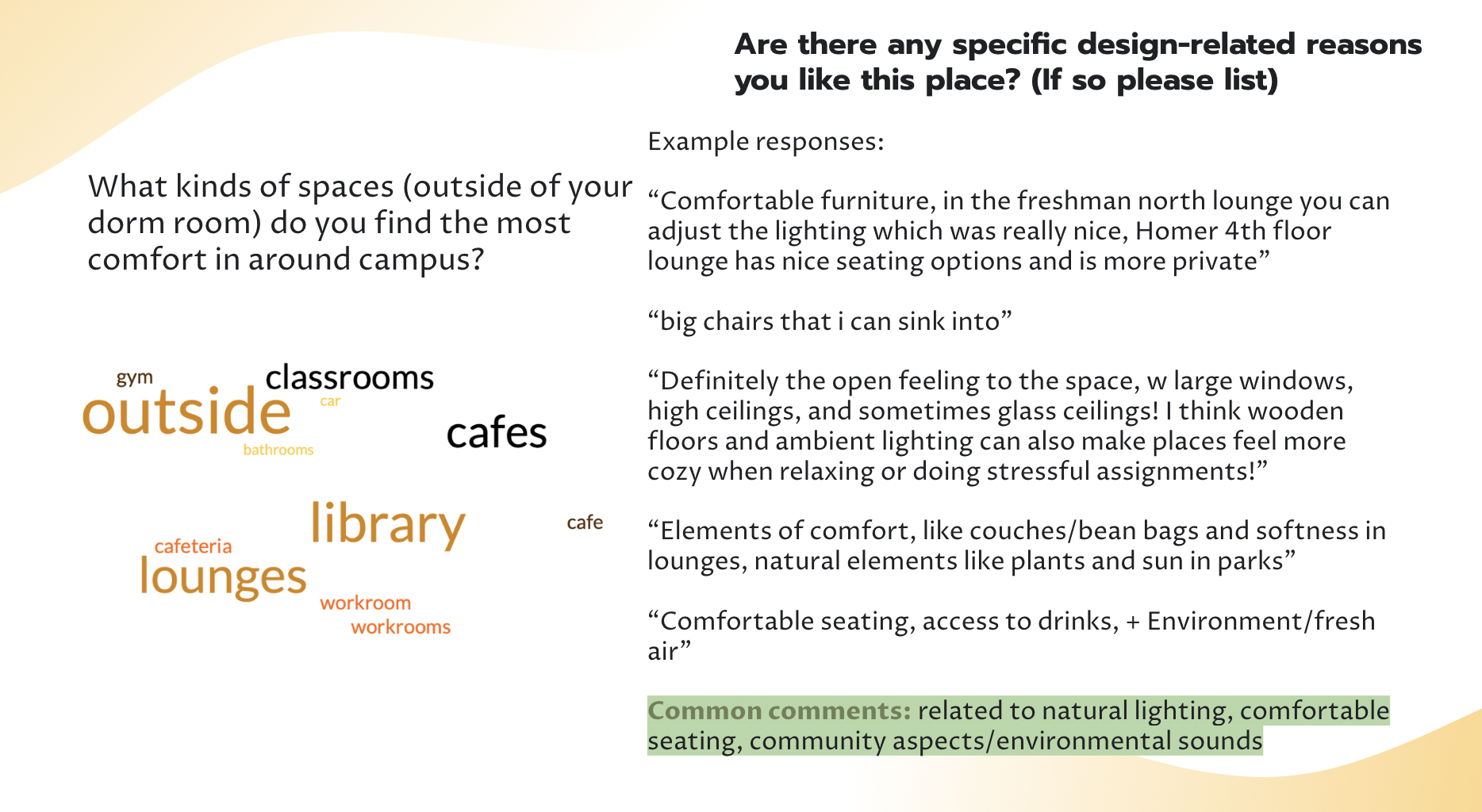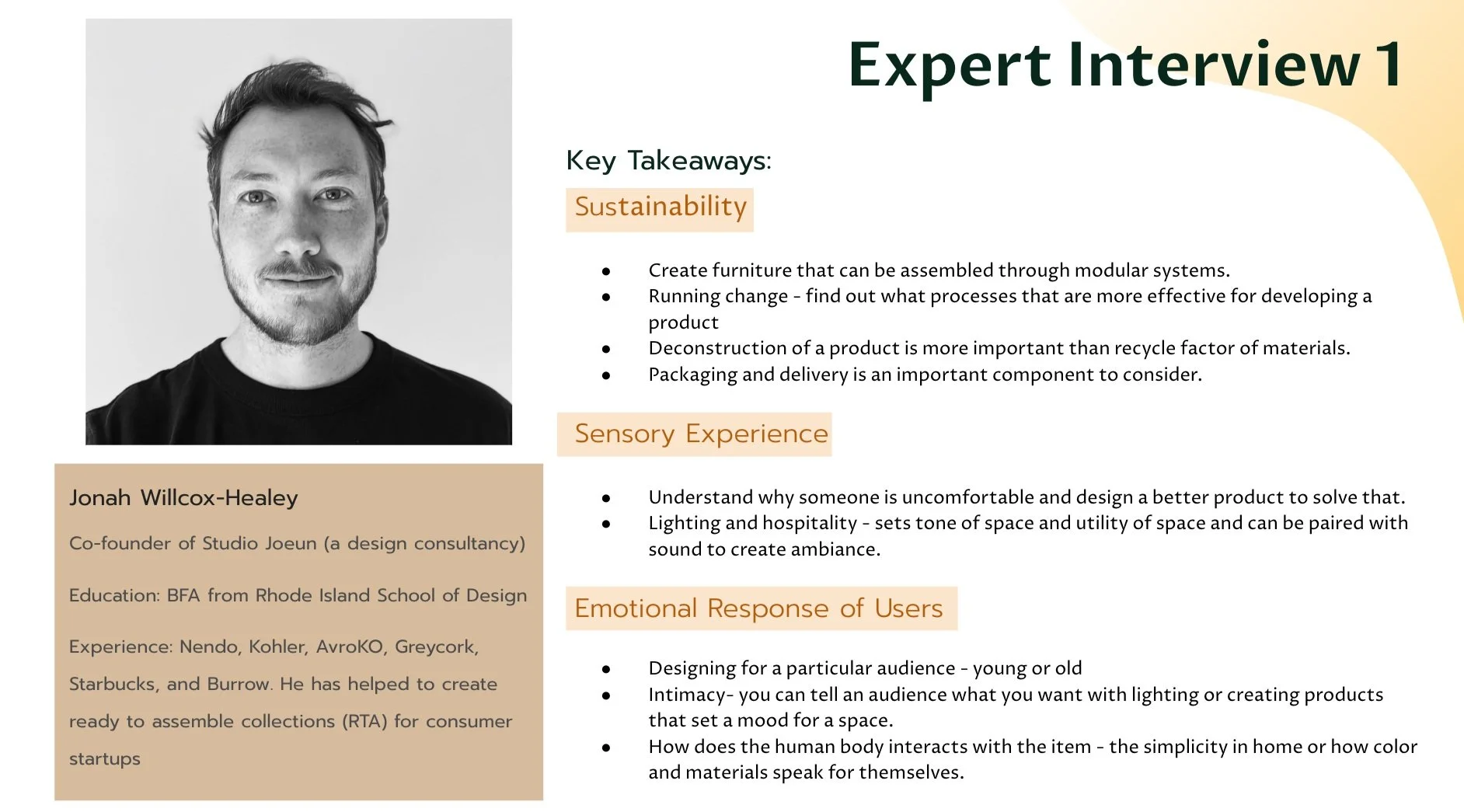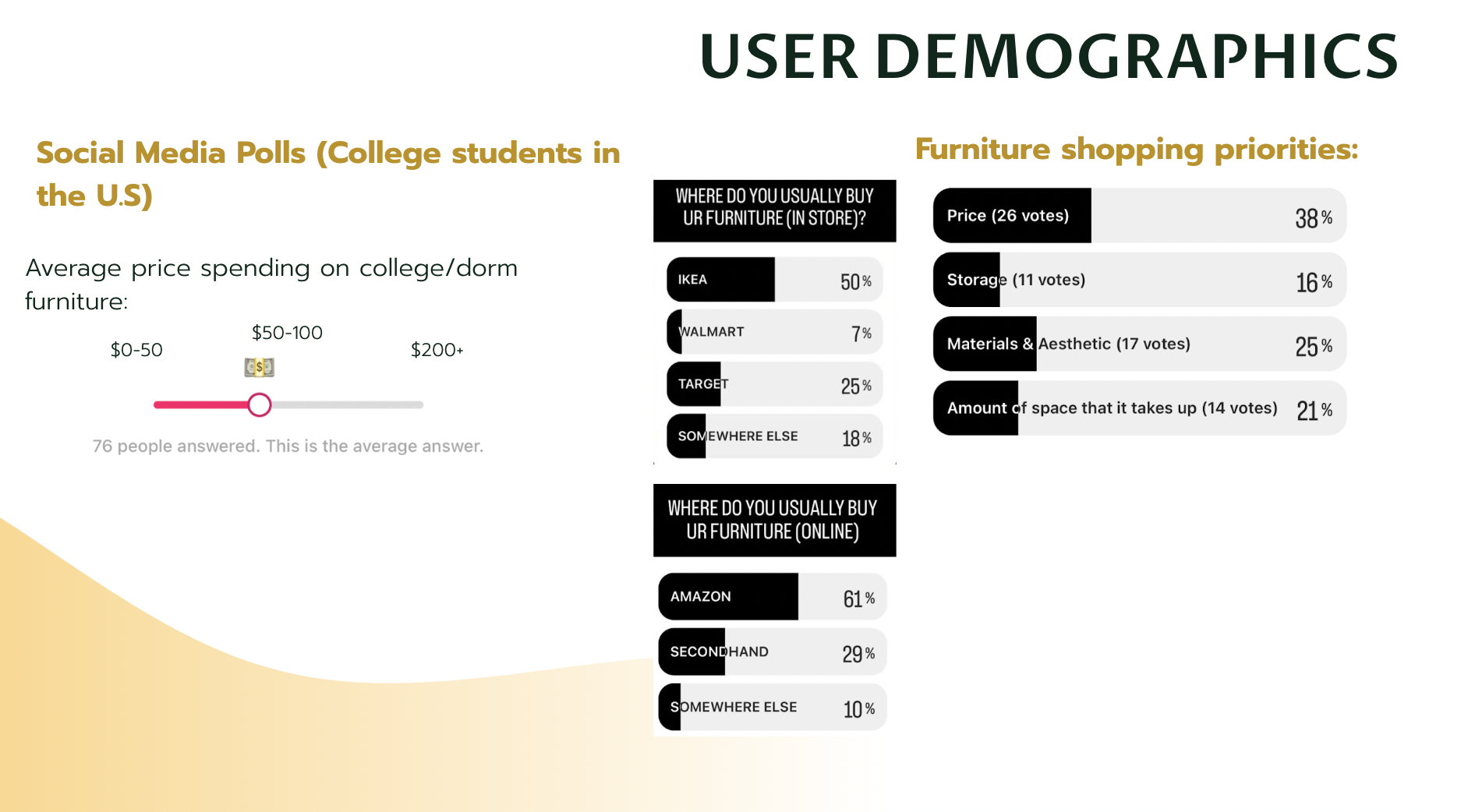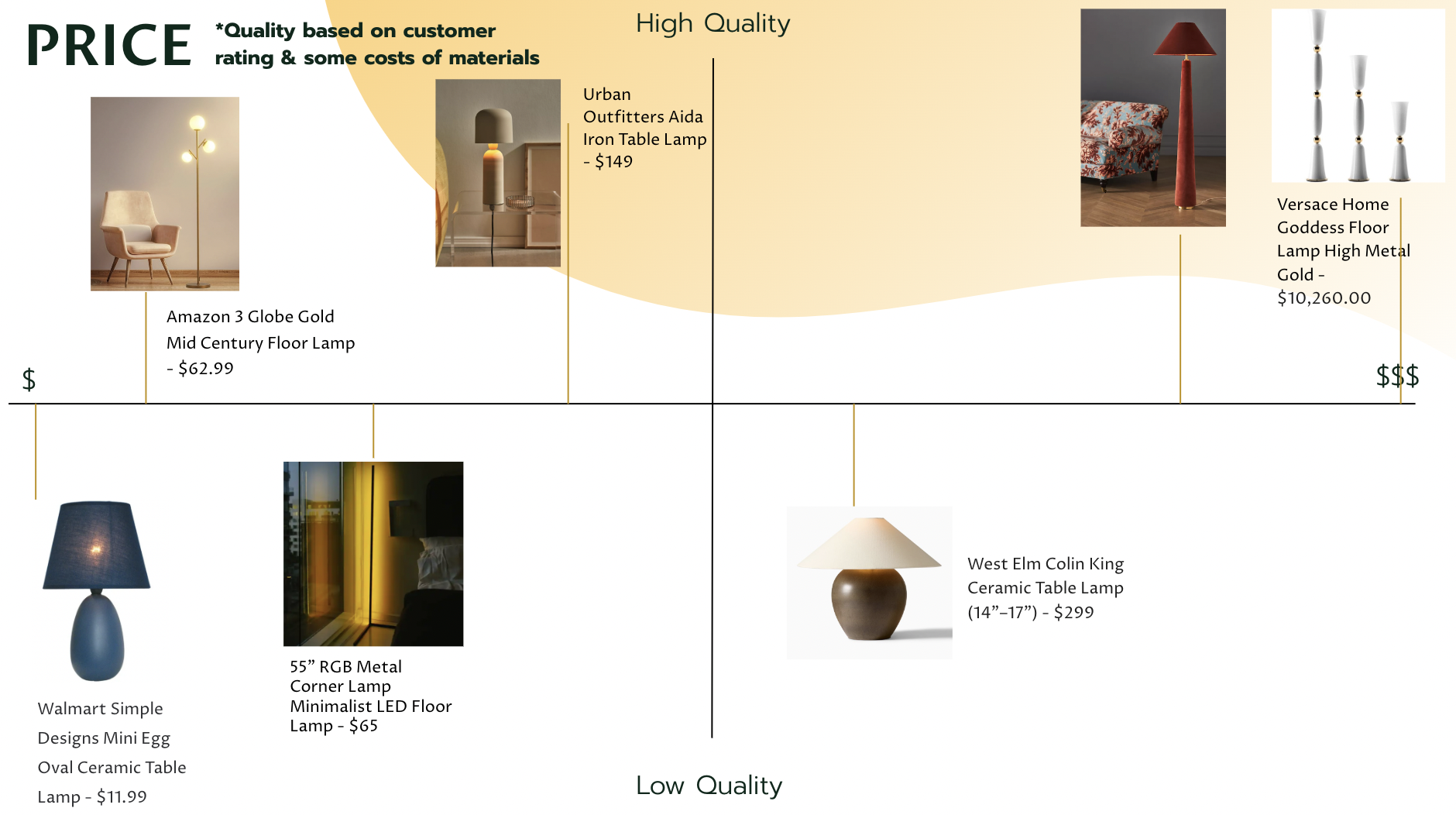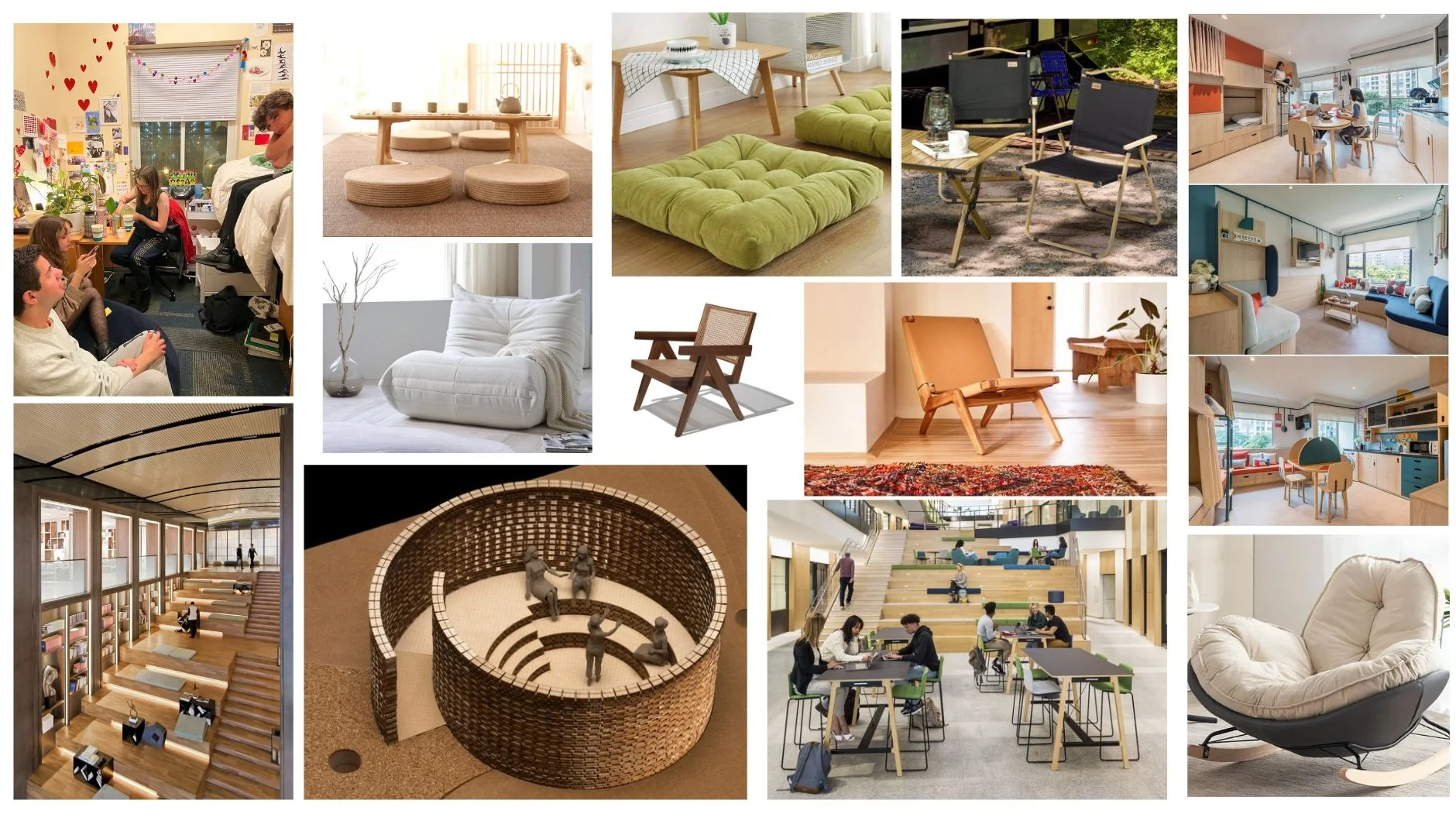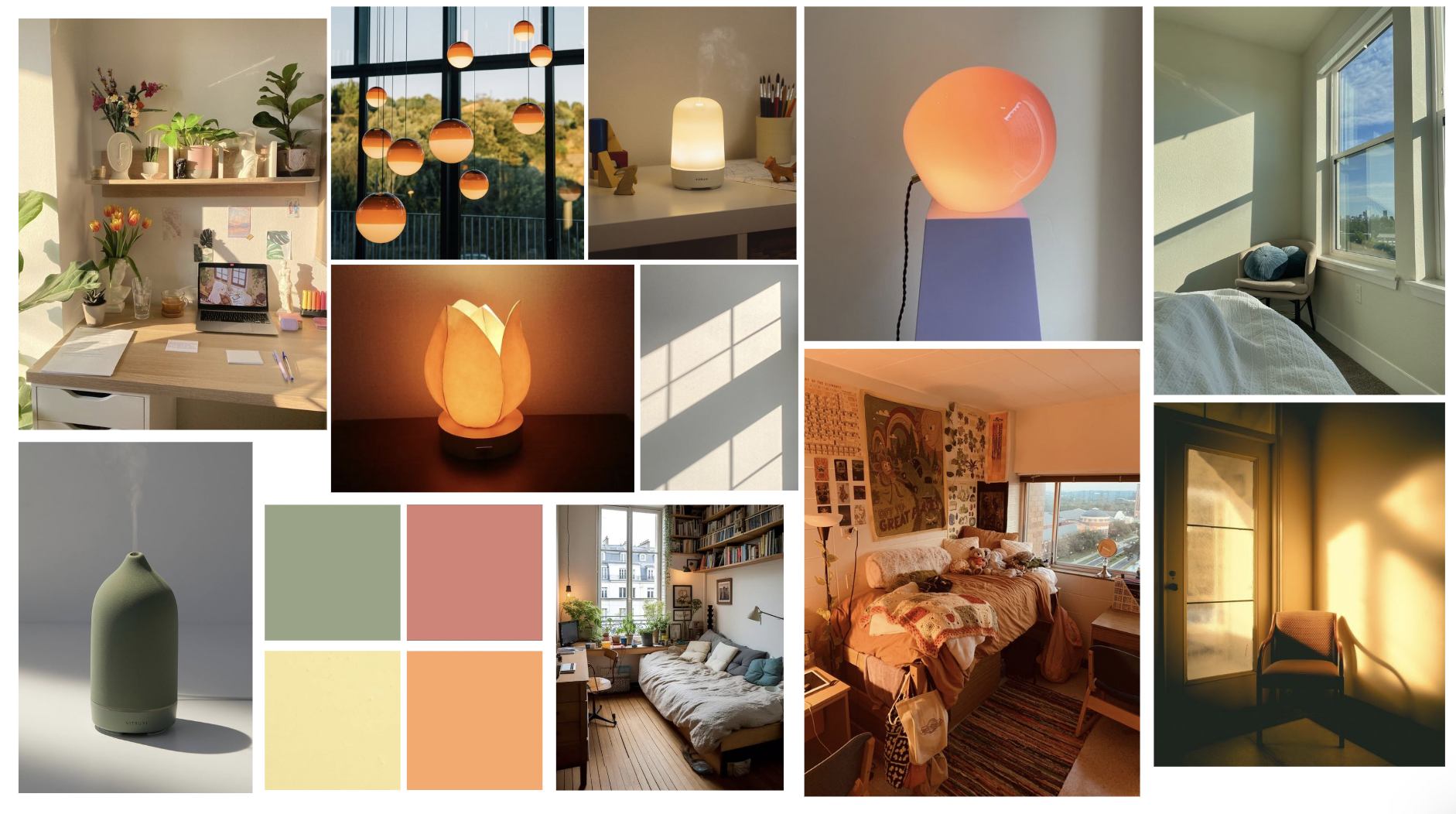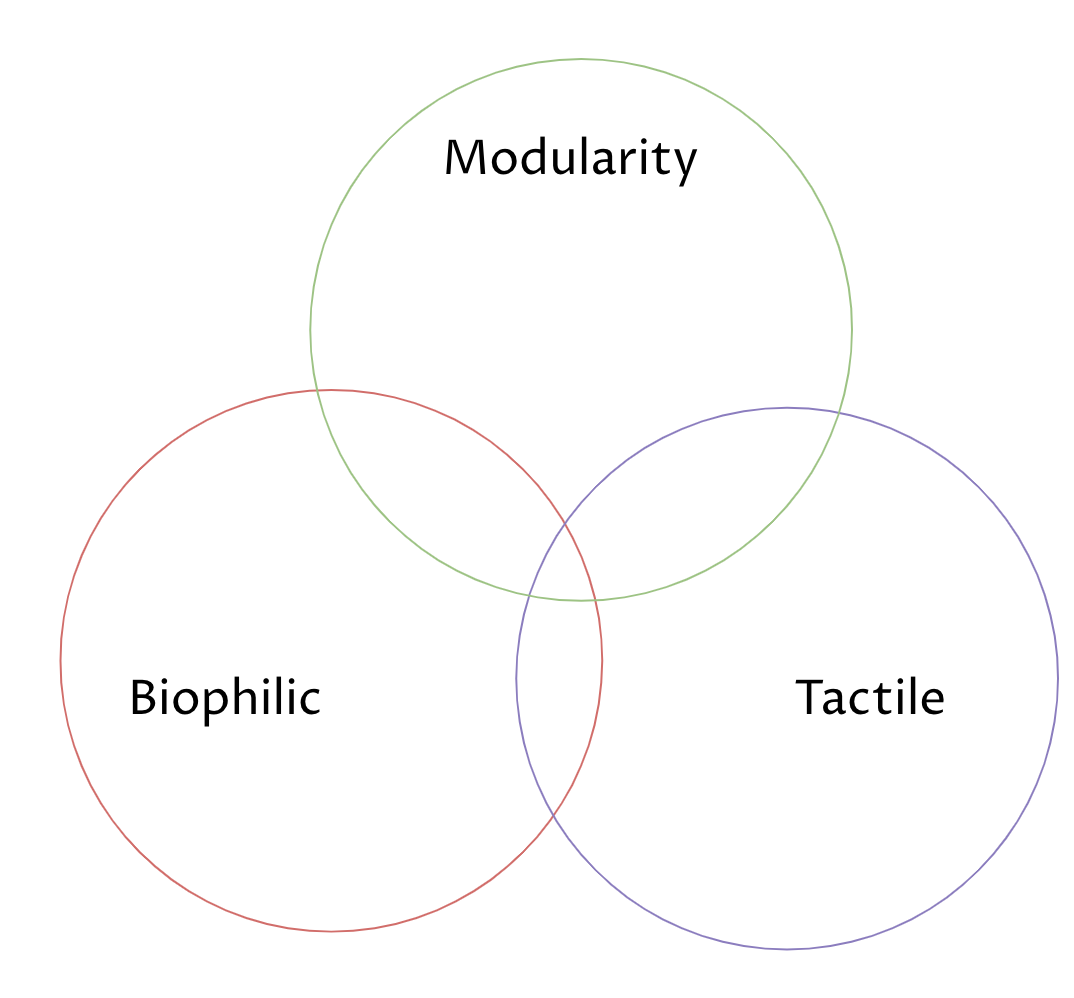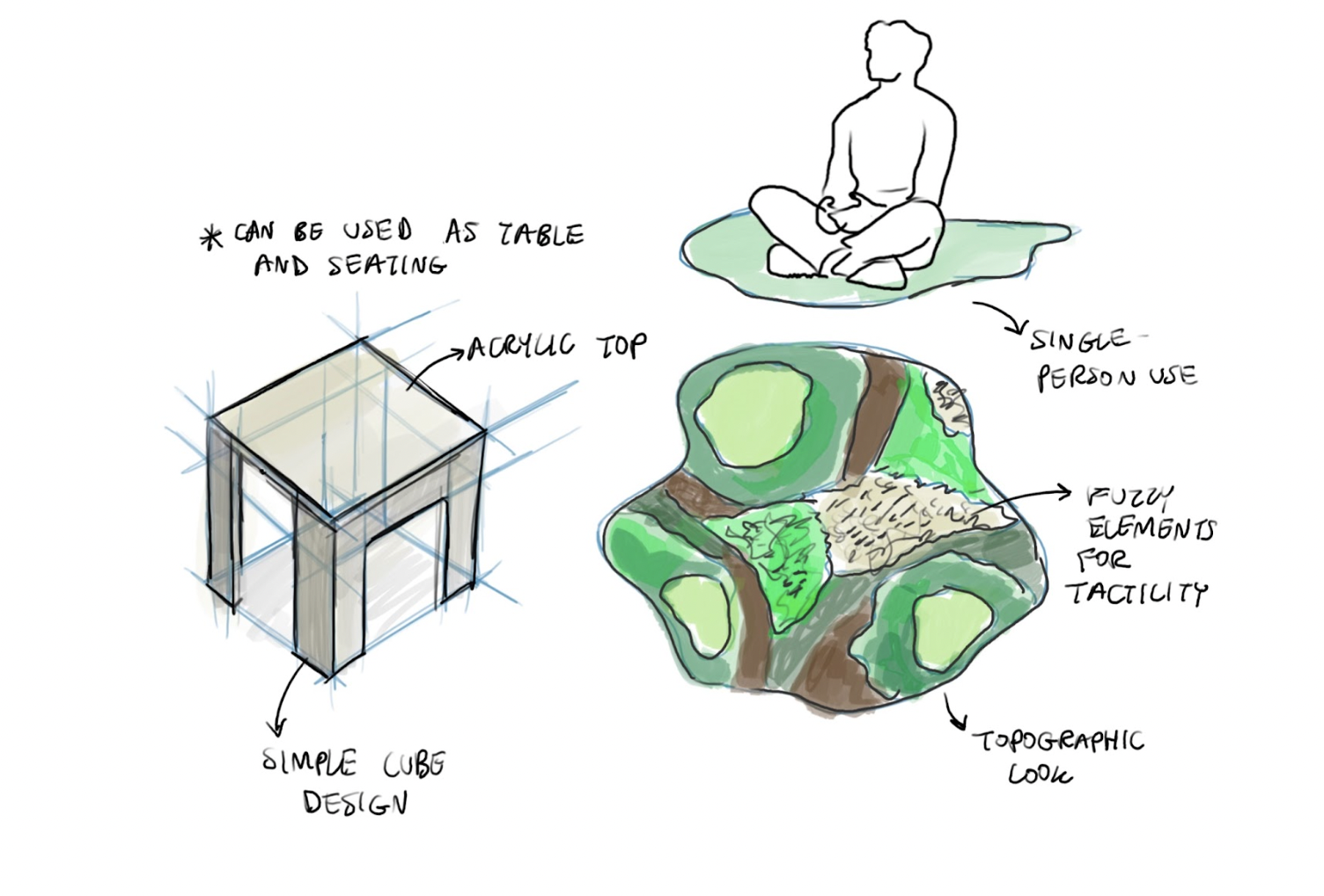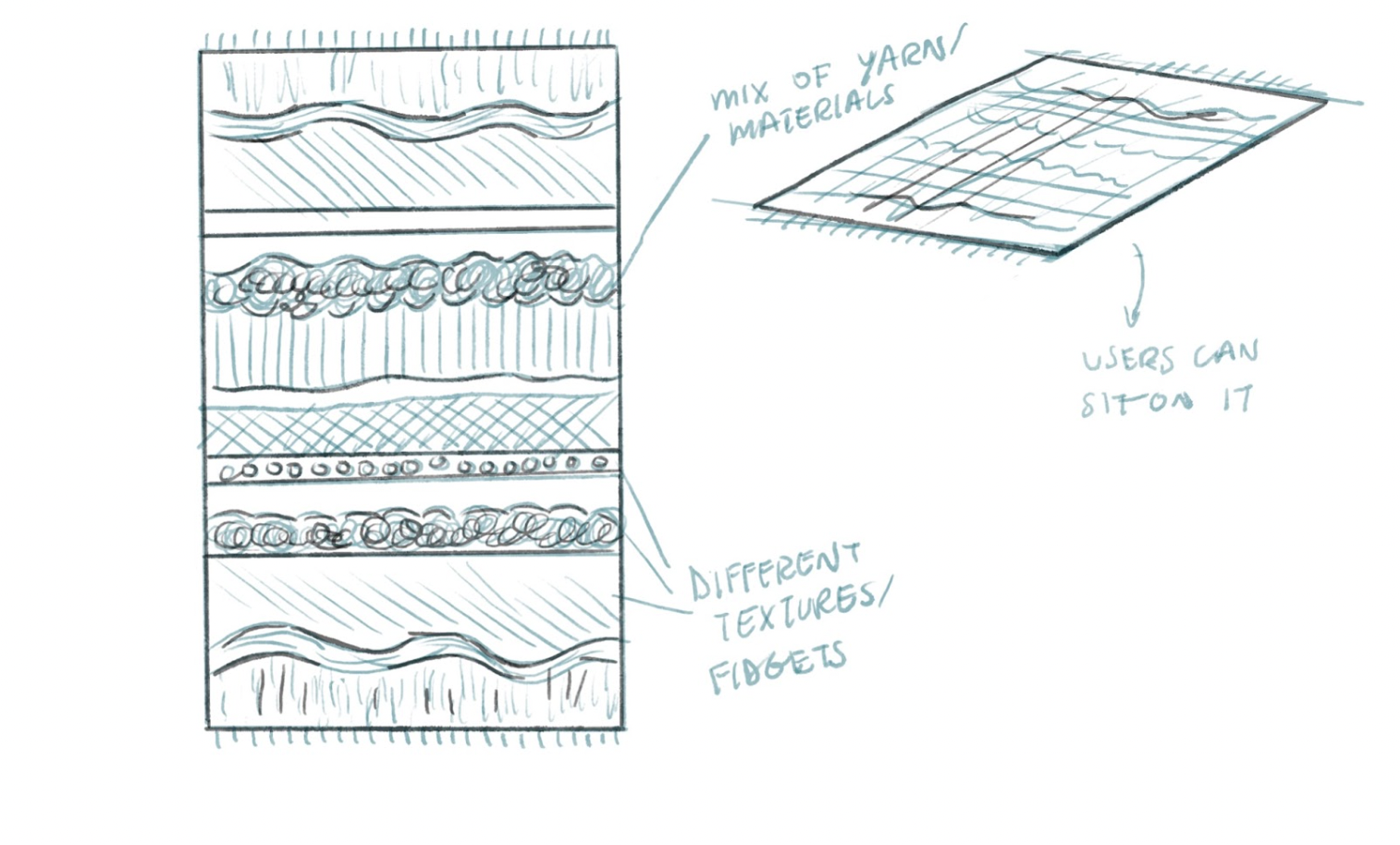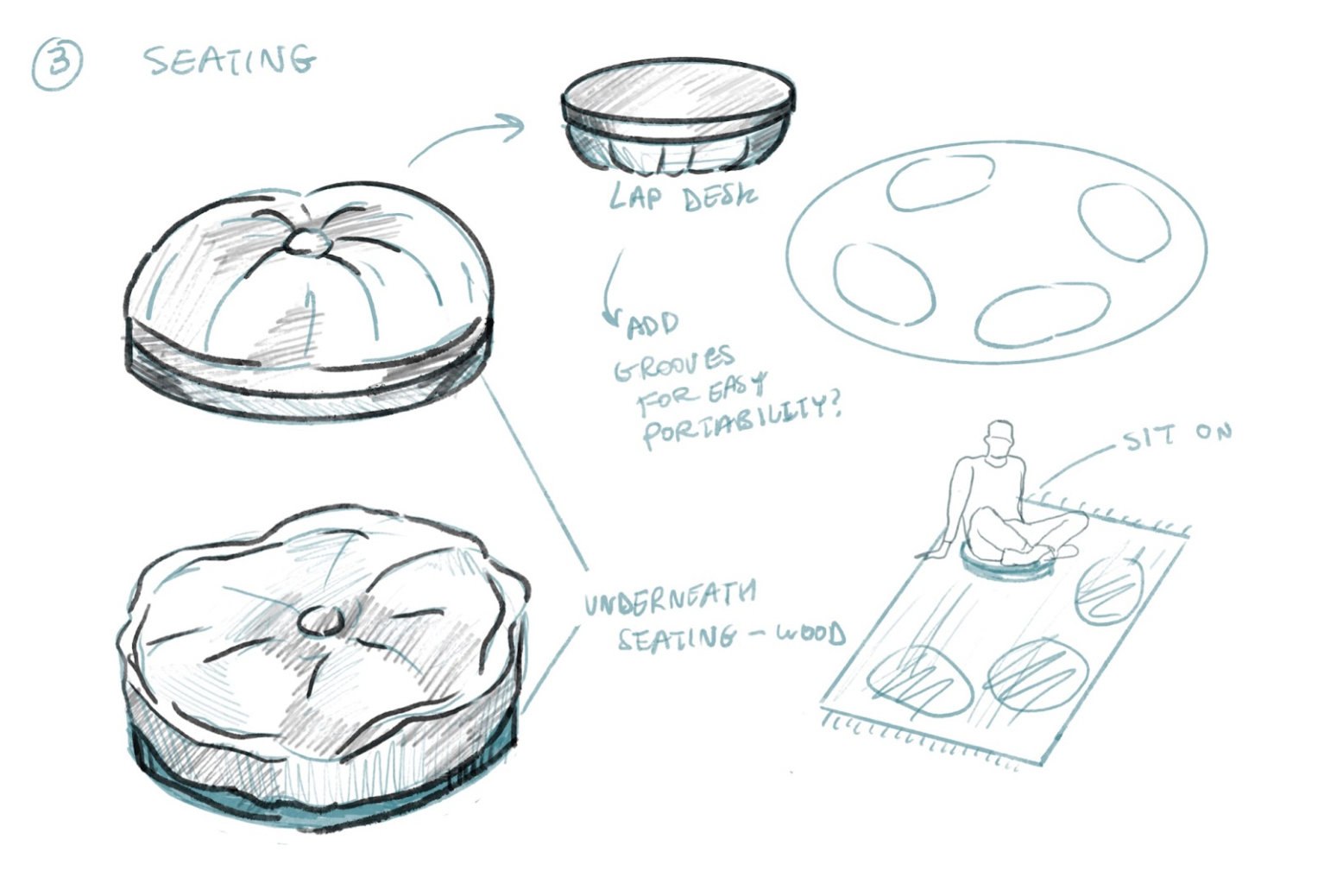Chaparral Rug & Table Set
(2024) Mixture of yarns, burlap, and felt.
Accompanying a small coffee table, this rug was designed on a smaller scale to explore biophilic design in shared spaces, such as college dorms or lounges. Inspired by topographic maps, this piece uses a variety of textures and techniques. Parts were made using a tufting gun, hand sewn, or hand tufted.
Topographic Rug
The resulting set (with the table) was an experiment that not only taught me new hands-on skills, but research skills and the importance of the connection between research and design.
(2024) Scrap plywood, mixture of yarns, and white acrylic.
This table is a rougher prototype made quickly using scrap wood. The final form and textile elements resonate with what my planned design would look like.
Moss Coffee Table

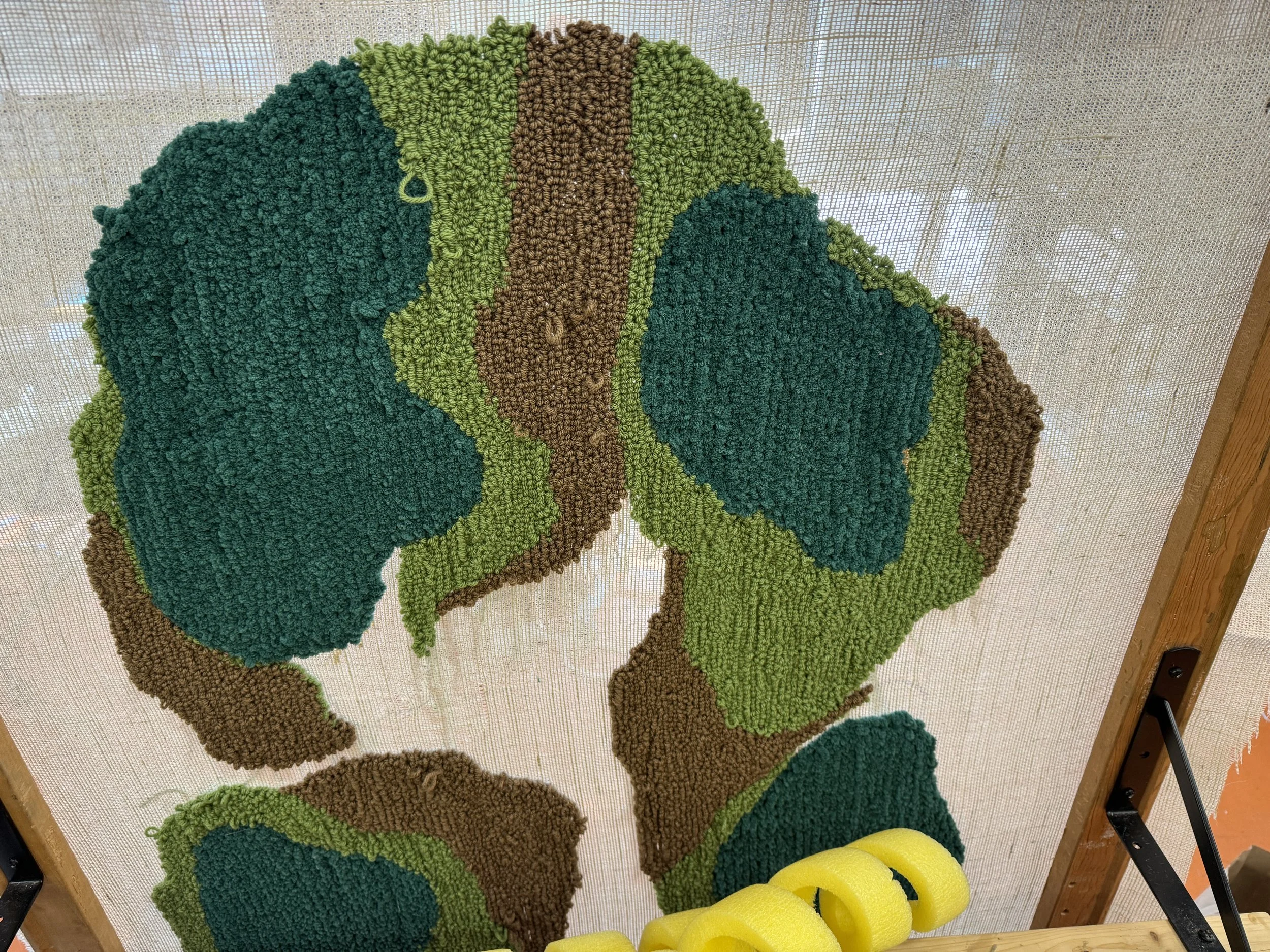
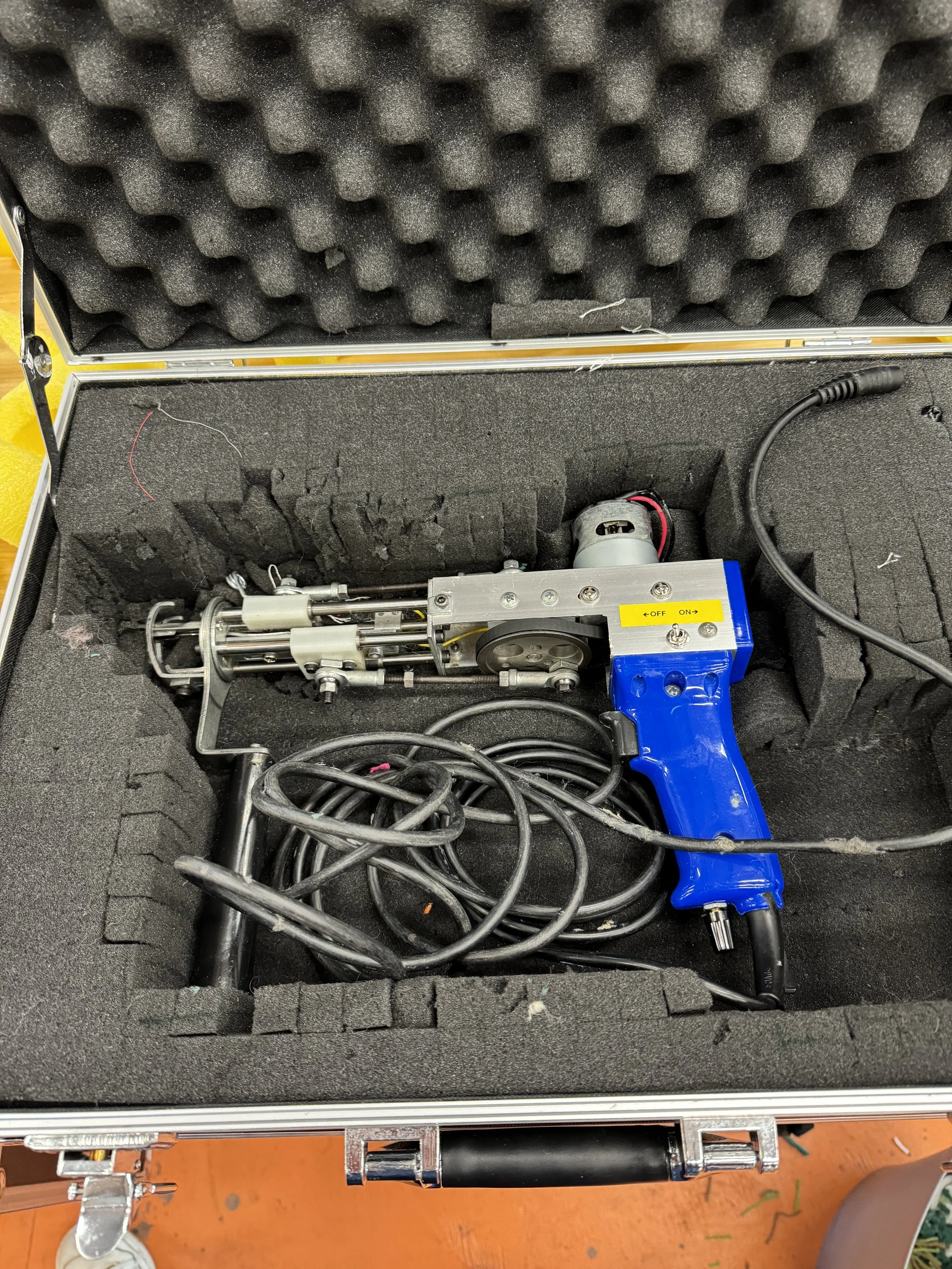

Interior Design Research
Prior to starting this project, I did some research on furniture and interior design, looking at the impact it has on individuals from a health standpoint. I was interested in how the aesthetics of a space or product can create positive emotions and stress relief for individuals, whether they live alone or with others. In the future, I would improve my final product by focusing more on form/function as I research through my design. The final results turned out to be more aesthetically driven than I had hoped.
Readings & Research
User Surveys & Interviews
Looking into how interior design can affect individuals, I explored my college campus and talked to designers & mental health professionals as well as surveyed students.
Market Research
Not knowing what sort of product I was going to make at the time, I was looking into rugs, seating, lighting, and even storage organizers. All of these categories I wanted to research a little bit, and gather insights to what other designers and companies were making.
Sketching, Mood Boards, & Prototyping
After doing research, I began my mood boards, sketching process, and patch prototypes to test out textures/colors. This stage informed much of the scale and final aesthetics that I ran with. Some of the prototypes looked purely at textiles, while others played with size in relation to the human body. I settled on 3 design opportunities: modularity, biophilia, and tactility.

